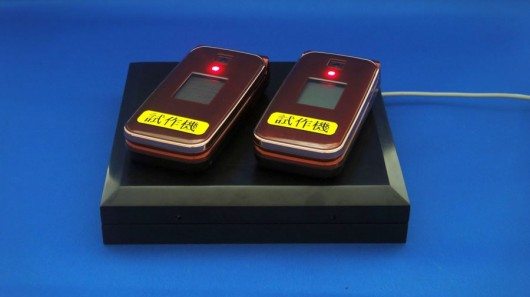A research effort from Fujitsu has announced a major step in developing a
wireless recharging technology that can work simultaneously with multiple
portable devices. Researchers have been struggling with wireless electricity
for some time now, and have come up with a number of different possible
solutions, most of which are only at a prototype stage because of
technological hurdles that can’t be circumvented. As far as wireless
charging goes, the two most popular solutions are electromagnetic induction
and magnetic resonance.
Electromagnetic induction works by creating a magnetic flux between a
power-transmitting and a power-receiving coil. While this is a promising
technology for some applications, and particularly for recharging electric
cars, it also seems to lack some flexibility since it only works over short
distances, and the power transmitter and power receiver need to be in
alignment for the system to work properly.
By contrast, the magnetic resonance method appears much more versatile, as
it can transport electricity from a single transmitter to multiple receiving
devices over a range of several meters and regardless of the relative
position of the two ends. While better in theory, the development of
magnetic resonance has been hindered by practical design issues: a number of
factors – parasitic capacitance, external magnetic fields, even the
batteries in the device to be charged can influence the magnetic fields and
drastically decrease the charging efficiency. Furthermore, the smaller the
devices, the more they are subject to external influences, making this
technology particularly hard to incorporate into mobile phones.
All these issues can be sorted out by properly designing the charging
system, but the process takes time. In fact, the development of wireless
charging for portable electronics has so far been hindered mainly by
problems associated with design and analysis of the systems themselves.
What the Fujitsu researchers developed is essentially a sophisticated
simulator that takes into consideration the coil model and the magnetic
resonance conditions. This tool can guide manufacturers’ decisions in
setting the parameters of the wireless chargers in such a way to maximize
the charging efficiency for multiple transmitters and receivers even for
devices, such as mobile phones, that used to be problematic because of their
small size.
The tool, which reportedly reduces design time by a factor of 150, was used
to design a compact power receiver and to manufacture prototype mobile
phones with built-in wireless charging. The mobile phones can get charged
from anywhere within the transmitter’s range, reaching 85 pecent efficiency.
Fujitsu said it will use this technology to develop wireless charging
systems for mobile phones and other portable devices, which should hit the
shelves in 2012. The company is also looking to apply the technology for
power transmission between computer chips and to provide mobile charging
systems for electric cars.






